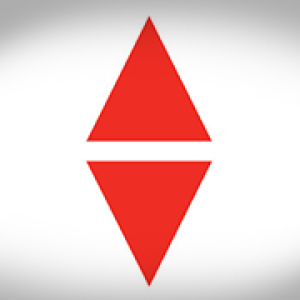Digital Pathology leverages high-resolution digital imaging and advanced AI tools to enhance diagnostic accuracy, streamline workflows, and enable global collaboration in histopathological evaluations.

Digital Pathology is a transformative use case within the realm of medical imaging that leverages advanced technologies to digitize and analyze histopathological slides. By converting traditional glass slides into high-resolution digital images, this innovative approach enhances the accuracy, efficiency, and accessibility of pathological evaluations, ultimately improving patient outcomes.
We’ve listed the products and solutions that commonly address the Digital Pathology use case below.

Sectra Digital Pathology offers advanced medical imaging solutions for pathology departments.

Pro Medicus Visage 7 is a medical imaging solution offering advanced visualization and analysis tools.
Google Cloud Medical Imaging offers advanced imaging solutions for healthcare, leveraging AI and cloud technology.
Philips IntelliSpace Portal is an advanced medical imaging solution for comprehensive analysis and diagnosis.
Leica Biosystems Aperio Digital Pathology offers advanced digital imaging solutions for pathology.

Fujifilm Synapse is a medical imaging solution offering advanced visualization and analysis tools.
Agfa HealthCare Enterprise Imaging is a comprehensive medical imaging solution.
Paige.AI is a medical imaging product specializing in AI-driven pathology solutions.
IBM Watson Health Imaging offers advanced medical imaging solutions to enhance diagnostic accuracy and patient care.
AWS HealthImaging is a medical imaging service by AWS for storing, analyzing, and sharing medical images.
Proscia is a medical imaging software designed for digital pathology.

Sectra PACS is a medical imaging solution for efficient image handling and diagnostics.
Customize these feature priorities in Taloflow and get expert ratings for 15 different vendors and solutions, including None.
| Feature | Dimensions | Description | Priority |
|---|---|---|---|
| HIPAA |
|
This demonstrates security and compliance with the standards of the healthcare industry. | Critical |
| 3D Imaging |
|
Allows for the creation of three-dimensional images from two-dimensional scans, providing a more comprehensive view of the area being examined. | Important |
| Adaptive Processing |
|
Automatically adjusts processing parameters based on the complexity of the image, ensuring efficient use of resources and faster processing times. | Important |
| Automated Image Analysis |
|
Uses algorithms to automatically analyze images and highlight areas of interest, reducing the workload on medical professionals. | Important |
| Batch Processing |
|
Allows for the processing of multiple images at once, rather than one at a time, which can greatly reduce the time required for large datasets. | Important |
| Color Accuracy |
|
Ensures that the colors in the images are true to life, which is crucial for accurate diagnosis in pathology. | Important |
| Contrast Enhancement |
|
Improves the contrast of images to highlight important details and structures, aiding in better diagnosis. | Important |
| Data Partitioning |
|
Divides large datasets into smaller, more manageable pieces (partitions) to improve performance and scalability, especially for big data applications. | Important |
| Dynamic Range |
|
Provides a wide dynamic range to capture both very bright and very dark areas in the same image, ensuring no loss of detail. | Important |
| GPU Acceleration |
|
Leverages the power of Graphics Processing Units (GPUs) to accelerate image processing tasks, providing faster results compared to traditional CPU processing. | Important |
| Geographic Distribution |
|
Distributes data and processing tasks across multiple geographic locations to reduce latency and improve performance for users in different regions. | Important |
| High Availability |
|
Ensures that the system remains operational and accessible even in the event of hardware or software failures, providing continuous service to users. | Important |
| High-Resolution Imaging |
|
Provides high-resolution images that allow for detailed examination and accurate diagnosis. | Important |
| Horizontal Scaling |
|
Allows for the addition of more servers or nodes to the system to handle increased load, providing a straightforward way to enhance capacity without significant downtime. | Important |
| Image Stitching |
|
Combines multiple images into a single, high-resolution image, which is particularly useful for large tissue samples. | Important |
| Multi-Modal Imaging |
|
Supports the integration of images from different modalities (e.g., MRI, CT, X-ray) into a single view, providing a more comprehensive understanding of the patient's condition. | Important |
| Noise Reduction |
|
Reduces image noise to enhance clarity and detail, ensuring that images are as clear as possible. | Important |
| PACS Integration |
|
Integrates with Picture Archiving and Communication Systems (PACS) to streamline the storage, retrieval, and sharing of medical images. | Important |
| Parallel Processing |
|
Utilizes multiple processors or cores to handle different parts of the image processing task simultaneously, significantly speeding up the overall processing time. | Important |
| Real-Time Imaging |
|
Provides real-time image processing and display, allowing for immediate analysis and decision-making. | Important |
| Pre-Processing Optimization |
|
Performs initial optimization steps on images before the main processing tasks, reducing the overall time required for analysis. | Nice To Have |

Taloflow does not guarantee the accuracy of any information on this page including (but not limited to) information about 3rd party software, product pricing, product features, product compliance standards, and product integrations. All product and company names and logos are trademarks™ or registered® trademarks of their respective holders. Use of them does not imply any affiliation or endorsement. Vendor views are not represented in any of our sites, content, research, questionnaires, or reports.